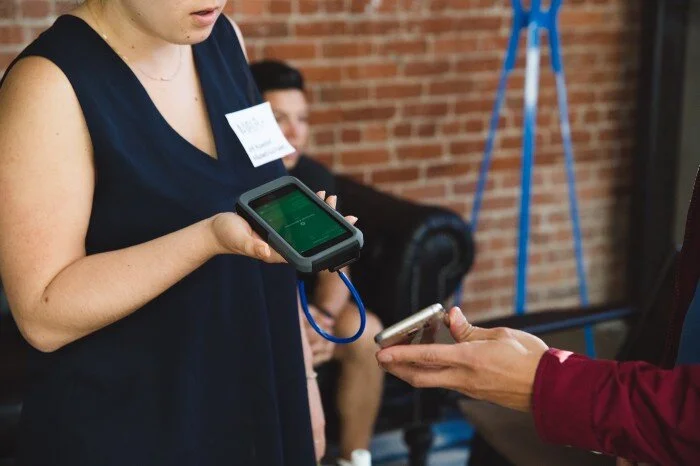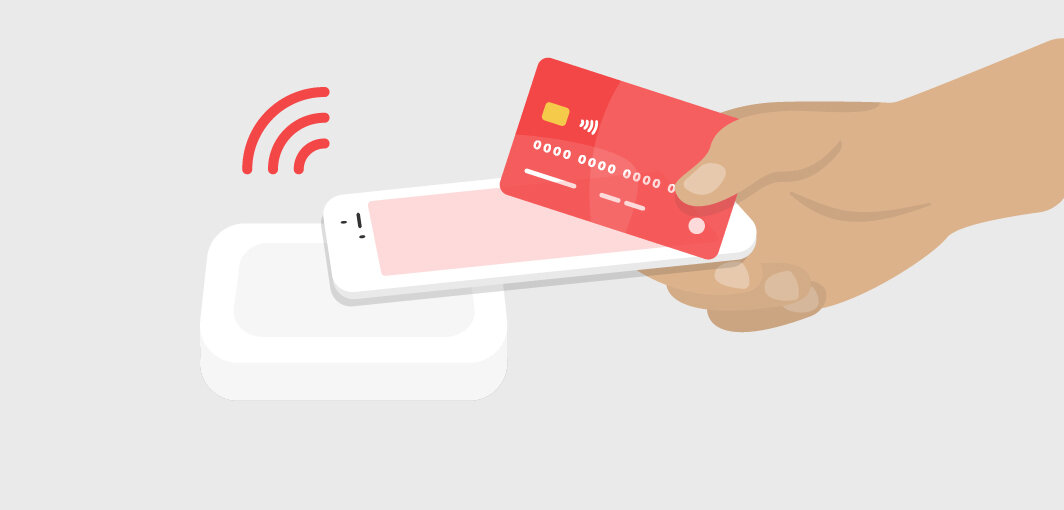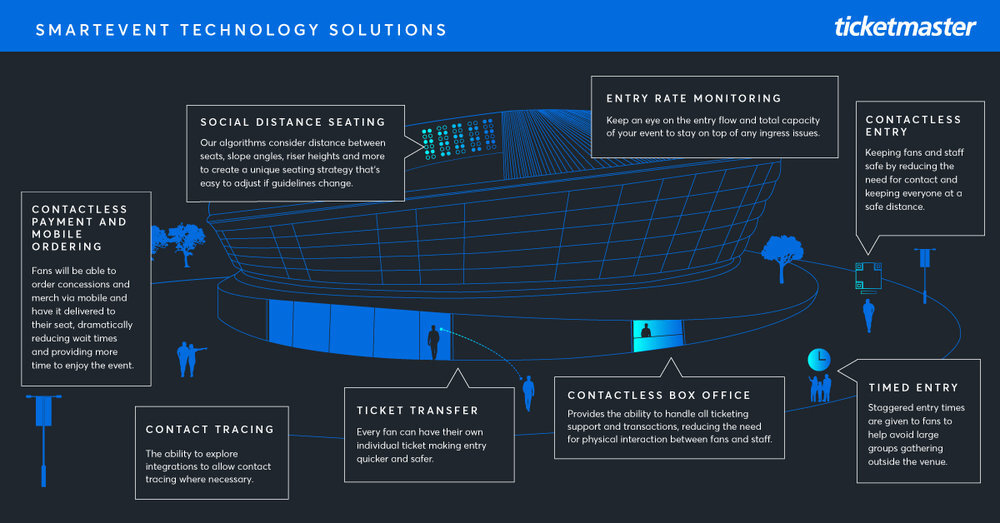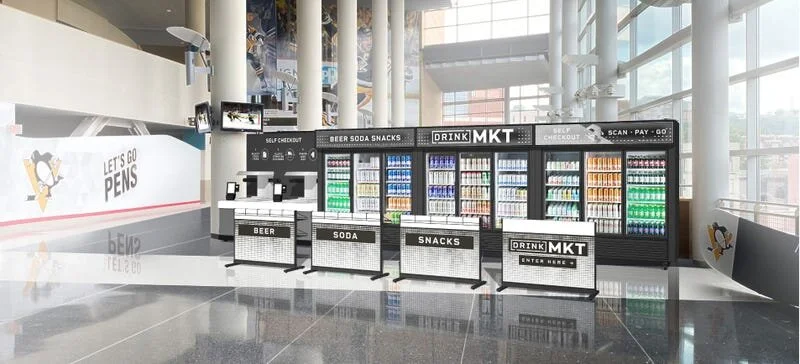Written by Ryan Dumas
Introduction
The Covid-19 pandemic has been a disruptive force in the entertainment and performing arts spheres. The theatre, which is known for generating unique experiences because it forces the audience to gather together, often in cramped spaces, to share a communal experience with the performers, was forced to become a mostly virtual and distanced art form to cope with the necessary safety measures precipitated by the pandemic. Sporting events, where thousands gathered to cheer on their favorite team amidst an often rowdy and reckless atmosphere, are now much more sedate affairs with masked attendees separated from each other by cordoned-off chairs. Museums, once a common ground for folks of all ages to flow in and out of their walls to see and experience the world’s greatest works of art, have become more like the DMV: patrons must arrive at their designated times with all proper documentation on hand before they can enter to view the art.
From a managerial perspective, these changes in presentation have created opportunities for innovation in places rarely thought possible. From tinkering with budgeting tactics, to formulating new marketing plans, to re-asserting the institution’s market share in a world where going out is a much bigger deal than before, every aspect of how a patron attends and experiences an arts and entertainment event is up for scrutiny. One of the most fundamental aspects of arts attendance—entry itself—offers especially interesting possibilities for disruption.
The way that ticketing worked most often in the past—handing it to an usher to scan or tear—now seems alarming because of the number of touchpoints and possible opportunities for infection. In a post-Covid world, this traditional method of ticketing seems unwise. This, however, provides incredible opportunities for disruption, primarily in the form of paperless and contactless ticketing. This way, patrons are still given an individualized experience for their entry, and institutions can still record attendance figures as well as even more intricate and interesting data. As this new era of paperless, contactless ticketing enters a new phase as live events return, can the practice remain sustainable? Can contactless ticketing not only serve as a safety measure in a post-Covid world, but actually enhance the audience experience?
Contactless Ticketing Origins
Contactless ticketing is the latest in a long line of technological innovations designed to decrease touchpoints and physicalized barriers to entry at arts events. Until within the last couple decades, tickets were marked as used by tearing: the ticket would separate along a perforation showing that the holder had entered the event space. In order to combat counterfeit tickets, companies began developing “entry management systems” built around technology. These systems would print barcodes onto a ticket, containing information about the specific time and date of performance. Ushers would then scan the barcode with an electronic reader to certify the validity of the ticket. This was not the end to fraud, though:
This instant lookup for the validity of the ticket is what thwarts most fraudulent entries but requires a wireless connection for the scanners to talk to the servers. More sophisticated setups will actually have these scanners download and store the barcodes locally to the device for faster validation. But the red laser technology was developed before people started putting tickets on their phones.
Figure 1: Mobile ticket scanning in action. Source: Ticketfly Tech.
People have, indeed, started putting tickets on their phones. Now, instead of any kind of paper ticket, customers can simply download their entry ticket to their phone, which is then directly scanned by the usher. This developed further into “paperless ticketing.” Paperless ticketing eschews the entire concept of the ticket itself, and “refers to a transaction where the purchaser uses her credit card to get into an event instead of having a ticket, PDF, or mobile phone scanable [sic] file.”
The shift to paperless life in general began to take hold first in Europe. As of late 2017, in the U.K., “more than half of all retail purchases are now paid for using cards and supermarket cashiers enquire routinely if a shopper needs a receipt - which most of us do not.” The term has morphed to also include “contactless ticketing,” which “burst onto the scene a few years ago with the roll out of Transport for London’s (TfL) contactless solution” and “refer[s] to the use of contactless bank cards to tap and ride on public transport systems.” This aligned with the trend toward contactless payments in general. Most commonly seen in banking and other consumer goods stores, contactless payments allow users to simply tap their card or phone on a receiver device, which then accepts their payment.
Figure 2: Illustration of contactless payment. Source: Masabi.
According to Forbes, “if you’ve even seen a passerby tap their phone at a checkout counter to pay for their latte, you’ve witnessed the technology in action.” The technology behind contactless payments, primarily radio-frequency identification (RFID) and near-field communication (NFC), allows electronic documents to connect utilizing wireless signals in order to safely transfer financial information. One of the first companies to mass introduce contactless payment as a primary option was Apple through their Apple Pay service, and in 2023, the Metropolitan Transit Authority in New York City will have phased out the MetroCard and replaced it with OMNY, a contactless form of payment and entry that will be required to use any form of MTA-operated public transit. If all goes well, it will be a huge win for contactless advocates and a sign that the technology is sustainable and scalable.
Using Contactless Technology in the Arts
Widespread contactless technology would be a benefit to the arts sector since contactless ticketing and payments have been slowly making their way into the arts sector, even before Covid. London’s Islington Assembly Hall gained notoriety for its rapid and early adoption of paperless tickets after agreeing to sell 50% of tickets through third-party agencies that are mostly paperless. According to Venue Business Manager Helen Rolle:
...since we went partially paperless, queues have practically disappeared....Our booking system, managed by the company called Dice, is not only fast and reliable. It also protects the fans from touts and makes sure that if the event is sold out, you get automatically put on a waiting list and will be offered a seat in case of a cancellation, while the person who cancels gets an immediate refund. Dice is 100 per cent mobile and the ticket lives in your smartphone handset without being printed. You can also transfer it electronically as a gift to friends who will then keep it in their phone. No other system, apart from Dice, can do that.
Managerially, the success of paperless ticketing at Islington shows that not only can paperless ticketing have success in arts venues, but that it may also enhance the fan experience.
Companies like Ticketmaster took the lead on bringing contactless and paperless ticketing into the U.S. market, primarily through mobile ticketing. Ticketmaster touts its advancement in this arena as “a safe, easy, convenient and contactless way to access tickets, and get through the entrance and to your seat in a flash” that also “guarantees a quick and safe ticket scan straight from your phone” with “no need for direct contact or physical exchange of your ticket.” It also claims that its technology “reduces the risk of ticket fraud, eliminating the possibilities of theft or counterfeiting” as “the barcode on your mobile ticket includes technology to protect it, which means screenshots or printouts of your ticket will not be scannable.” This technology has largely eliminated most issues that many companies and patrons had with paperless ticketing and has been updated to take into account necessary safety measures necessitated by the Covid-19 pandemic.
However, many institutions do not use Ticketmaster for their ticketing services, and the old problems remain. "Kiplinger" notes that “to enter a venue with a paperless ticket (which differs from a traditional electronic ticket in that you can’t print it out or show it on your phone), an event goer must swipe the credit card used to buy the ticket and show photo identification. Because tickets are linked to the cards used to buy them, people giving these tickets as a gift may need to escort the recipients to the gate.” Additionally, Ticketmaster itself has not always had financial success with its platform. In 2019, the West End production of “Hamilton,” “which developed a ticketing system, which is run by Ticketmaster, to combat online touts and ‘unauthorised profiteering of third-party resellers,’ is set to revert back to a more traditional ticketing operation, with paper tickets to be available later this year.”
However, with Covid-19 forever changing our relationship to touch and sharing spaces, paperless and contactless ticketing has expanded far more rapidly and widely than ever before, and initial reviews show that the increased attention paid to this arena has led to inventive new technologies and occasionally an improved fan experience that will be kept in place long after Covid. One of the groups leading the way in ticketing innovation is the ticketing companies themselves. For example:
UK-headquartered See Tickets...has developed a contactless access-control system that uses a standalone scanning point requiring no physical interaction from fans or staff...Janam, whose GTI device uses tap-and-go technology...and Texas’s SimpleTix...by providing its digital ticketing platform to venues experimenting with drive in shows...Intix has developing [sic] a contact-tracing add-on for its platform that aims to help the Australian government with tracking the spread of the disease.
Ticketmaster is also adapting its technology to not only provide consumer ease but also to support public health efforts. Its new technology suite SmartEvent, “designed with flexibility in mind...gives event organizers the ability to adapt protocols to meet evolving needs of capacity, distancing, and other logistics throughout the reopening journey for concerts, sports games, comedy shows, and other events. Many of these capabilities will deliver long-term implementation value, opening new doors for fan experience.”
Figure 3: Diagram of Ticketmaster’s SmartEvent technology solution. Source: Ticketmaster.
Specific aspects of Ticketmaster’s technology suite are uniquely suitable for arts venues, particularly museums and theatres with flexible seating arrangements. For example, “The Social Distance Seating Tool uses custom algorithms that consider venue size, distance between seats and many more data points to create unique seating strategies for each event.” Additionally, Ticketmaster’s Timed Entry Tool “allows organizers to give fans specific arrival times and entry ways to manage the flow of people into the venue....Entry Rate Monitoring Tools help manage lines and avoid congestion.” Similarly to Intix in Australia, as America’s vaccine rollout ramps up, “Ticketmaster has been developing a post-pandemic safety plan to get customers back to concerts. Billboard reported that includes using smart phones to verify its ticket-buyers have received a vaccine or tested negative for Covid-19 recently within a 24- or 72-hour window.”
Contactless Technology in Practice
The results of these advancements in ticketing technology, especially to promote safety during the worst of the Covid-19 pandemic, can bee seen in arts and entertainment venues in Pittsburgh. One of the largest cultural organizations in the city, the Carnegie Museums, has instituted a timed-ticketing policy, only letting in new visitors every 30 minutes. This system allows the museums’ staff to track the number of visitors at all times so that occupants will “never exceed 15% of building capacity at any given time.” This system has also been adopted by the Mattress Factory, which requires advanced purchases of timed tickets and is offering a paperless ticketing option for those who wish to participate. Timed tickets have also been implemented at the Pittsburgh Zoo & PPG Aquarium, in addition to closing the tram and play areas and installing Plexiglass barriers and social distancing markers. While “entry times are spaced out, there isn’t a requirement for how long visitors can remain inside the park.”
Perhaps the most complete overhaul of systems in order to be Covid-compliant can be found at PPG Paints Arena, home of the Pittsburgh Penguins hockey team.
Contactless is the name of the game, as:
The experience is now entirely digital and cashless. Fans will scan their mobile tickets to enter the arena, and can even have their favorite food order ready for pickup minutes after they walk in. They can also order from the team store during the game, and pick up their order from their own designated locker. Across the arena, there are grab-and-go stations where fans can grab a drink or a hot food item, walk over to self check out, scan, pay and be on their way.
The Penguins are the only organization of those mentioned above to exclusively use Ticketmaster and their suite of products for ticketing, which may explain their more advanced and data-oriented approach to ticketing and fan engagement. Ticketmaster only releases seats in pre-determined blocks spaced six feet apart from each other, and if a block sells fewer seats than it can hold, the ticketing software can immediately adjust the placement and sizing of other blocks to accommodate more fans.
While the Penguins may be one of the most advanced organizations in Pittsburgh in terms of ticketing advancements and Covid safety, organizations in other cities are using similar software and protocols to maintain safety and drive innovation. Houston’s Miller Outdoor Theatre has partnered with Purplepass to institute paperless ticketing exclusively as well as utilize Purplepass’s Auto Social Distancing Tool, which adjusts as patrons buy tickets and “will automatically put seats on hold around the party based on the distancing values set in [each venue’s] account.” As discussed above, many drive-in theatres are now utilizing SimpleTix to both increase ticket security and patron safety. The switch to paperless ticketing is accomplished by providing each patron with “a color-coded, scannable QR code. Theater staff simply scan the QR code quickly, moving cars through the gate and preventing long lines....There are no long-term contracts to sign, and theaters are able to use their existing Square account, which means there is no need to set up a merchant account with a bank.”
Enhancing Experiences
Not only do these adjustments to ticketing systems and software provide organizations with new data, new ways to engage with their patrons, and the ability to operate in a Covid-safe manner, but reports indicate that many of these changes also improve the fan experience. ESPN notes that “adding new types of ticket packages and speeding up the transition to mobile ticketing and a cashless experience at stadiums and ballparks” will increase flexibility for fans and drive up demand for tickets that has cratered in the past year. Innovations will hopefully include “greater flexibility on refunds and exchanges,” a crackdown on predatory resale sites, a lesser reliance on bots, and lower prices. Additionally, ticketing executives say that the switch to a paperless experience is now not only better for the fan, but better for the team and arriving quicker than expected: Michael Lorenc of Google notes that “‘We really have seen 10 years of innovation in 10 months.” For example, at the home of the Miami Dolphins, fans now park using a “digital ‘toll-timed pass,’” where “data sent back from these devices can tell the team how often fans are using their spots and how early they’re arriving to games.” Additionally, “fans will also use their phone to scan themselves through a turnstile, order food and buy merchandise. At the same time, the phone will be sending data back to the team about fan movement and spending habits.” Experts believe that fans agree that these changes are productive and useful: “Frustrated fans, and even some people inside the ticketing industry, have felt that changes were long overdue. ‘Ticketing was broken,’ said Gary Adler, the executive director of the National Association of Ticket Brokers. ‘It was a really bad and ugly situation for consumers. I hope when we come out of this there will be a return to customer-first.’”
Figure 4: Imagined contactless concession stand at the PPG Paints Arena. Source: Audacy.
Conclusion
Ticketing has come a long way: from tearing along a perforated line to using RFID technology to wirelessly communicate with an app on a phone to let you into a Broadway musical. While changes to the industry were happening slowly, primarily switching to a paperless and even contactless system, the Covid-19 pandemic accelerated the need for change. As the promising signs that these advancements are positive from before the pandemic extend through to now, and as fans and organizations praise these new systems, it is clear that contactless ticketing is both a sustainable innovation and part of the future of ticketing.
+ Resources
“5 Tools for Keeping Students and Fans Safe with Touchless Ticketing.” FNF Coaches. Accessed 8 April 2021. https://fnfcoaches.com/5-tools-for-keeping-students-and-fans-safe-with-touchless-ticketing/.
Bailey, Giles. “EXCLUSIVE: The rollout of contactless ticketing in Europe.” Metro Magazine, 8 February 2018. https://www.metro-magazine.com/10033106/exclusive-the-rollout-of-contactless-ticketing-in-europe.
“Contactless Ticketing.” Saffire. Accessed 8 April 2021. https://www.saffire.com/p/what-is-saffire/contactless-ticketing.
“COVID Policies.” Mattress Factory. Accessed 8 April 2021. https://mattress.org/covid-policies/.
D’Alessandro, Anthony. “Atom & Independent Cinema Alliance Partner On Contactless Ticketing.” Deadline, 12 October 2020. https://deadline.com/2020/10/atom-independent-cinema-alliance-ica-partner-on-contactless-ticketing-1234595964/.
Horwat, Nick. "Penguins and Aramark announce new, contactless concessions for PPG Paints Arena." 93.7 The Fan, 30 September 2020. https://www.audacy.com/937thefan/sports/gallery/contactless-concessions-at-ppg-paints-arena.
Garr, Stephanie. “Mobile Ticketing: An Essential for Safe Entry.” Ticketmaster Blog. Ticketmaster, 13 January 2021. https://blog.ticketmaster.com/mobile-ticketing-an-essential-for-safe-entry/.
Gooch, James. “Everything You Need to Know About Contactless Ticketing for Public Transport (cEMV).” Masabi, 14 August 2020. https://blog.masabi.com/blog/everything-you-need-to-know-about-contactless-ticketing-for-public-transport-cemv.
Harner, Jenna. “Here are the changes you’ll notice heading to a Penguins game at PPG Paints Arena this season.” WPXI, 3 March 2021. https://www.wpxi.com/sports/nhl/pittsburgh-penguins/here-are-changes-youll-notice-heading-penguins-game-ppg-paints-arena-this-season/WARMM6DNFJHBZMGU5YO7D6YDLQ/.
Himelstein, Matthew. “The Greatest Ticket Scanning System in the World.” Ticketfly Tech. Ticketfly, 28 September 2017. https://tech.ticketfly.com/the-greatest-ticket-scanning-system-in-the-world-eaa32d7198c.
“How Contactless Pay Works At The Movie Theater.” Cinemark, 22 July 2020. https://www.cinemark.com/movie-news/how-to-use-contactless-pay-at-movies.
Hughes, Blair. "The new ticketing technology that may make scalping a thing of the past." The Conversation.com, 27 November 2012. https://theconversation.com/the-new-ticketing-technology-that-may-make-scalping-a-thing-of-the-past-87674.
IQ. “Ticketing Companies Gear Up for Post-COVID-19 Future.” IQ Mag, 19 May 2020. https://www.iq-mag.net/2020/05/ticketing-companies-gear-post-covid-19-future/#.YG0EeuhKg2w.
Kanik, Hannah. “Ticketmaster preparing to link vaccine and COVID-19 test data to concertgoers’ digital tickets.” PhillyVoice, 13 November 2020. https://www.phillyvoice.com/covid-19-vaccine-coronavirus-tests-concert-tickets-ticketmaster-app/.
“Know Before You Go.” Pittsburgh Penguins.com NHL. Accessed 8 April 2021. https://www.nhl.com/penguins/tickets/know-before-you-go.
Kostka, Andy. “Pittsburgh Zoo will reopen Friday with timed ticket system, safety modifications.” Pittsburgh Post-Gazette, 3 June 2020. https://liber.post-gazette.com/local/city/2020/06/03/Pittsburgh-Zoo-PPG-Aquarium-reopening-Friday-coronavirus-timed-tickets-cleaning-safety.
MK, Michael. “Houstons Miller Outdoor Theatre switches to contactless ticketing and social distancing support.” MusicBizHub, 10 April 2021. https://themusicbizhub.com/publications/covid-19/houstons-miller-outdoor-theatre-switches-to-contactless-ticketing-and-social-distancing-support.
News Release. “Gateway Ticketing Systems unveils pioneering approach to make every guest count in a post-COVID world.” Amusement Today, 8 December 2020. http://amusementtoday.com/2020/12/gateway-ticketing-systems-unveils-pioneering-approach-to-make-every-guest-count-in-a-post-covid-world/.
Pantorno, Joe. “Madison Square Garden introducing easier entry options for Knicks, Rangers games.” amNY, 22 March 2021. https://www.amny.com/sports/madison-square-garden-introducing-easier-entry-options-for-knicks-rangers-games/.
Pitsker, Kaitlin. “The Problems With Paperless Tickets.” Kiplinger, 2 January 2014. https://www.kiplinger.com/article/spending/t062-c000-s002-problems-with-paperless-tickets.html.
Rascher, Daniel A. and Andrew D. Schwarz. “‘Paperless Ticketing’ and its Impact on the Secondary Market: Antitrust Implications.” SSRN, 21 July 2019. https://papers.ssrn.com/sol3/papers.cfm?abstract_id=2924146.
San Martin, Francisco. "Lacey Street Theatre Ticket 194359." n.d., color scan. Wikimedia Commons. https://commons.wikimedia.org/wiki/File:Lacey_Street_Theatre_ticket_194359.jpg.
SimpleTix. “Drive-in Theaters Tap SimpleTix for Contactless Ticketing in COVID-Driven Resurgence.” PR Newswire. Cision, 19 May 2020. https://www.prnewswire.com/news-releases/drive-in-theaters-tap-simpletix-for-contactless-ticketing-in-covid-driven-resurgence-301060830.html.
“Supplemental Terms for Tickets for the 2020/2021 NFL Season.” Ticketmaster Help. Ticketmaster, 11 January 2021. https://help.ticketmaster.com/s/article/Supplemental-Terms-for-Tickets-for-the-2020-2021-NFL-Season?language=en_US.
“Tap to pay with Visa contactless payments.” Visa. Accessed 8 April 2021. https://usa.visa.com/pay-with-visa/contactless-payments/contactless-payments.html.
TheTicketingBusiness. “Hamilton to Ditch Anti-Touting Paperless Ticketing System.” Ticketing Business News. The Ticketing Business.com, 6 September 2019. https://www.theticketingbusiness.com/2019/09/06/hamilton-ditch-anti-touting-paperless-ticketing-system/.
TheTicketingBusiness. “Safety Group Stresses Need for Electronic Tickets Post-COVID-19.” Ticketing Business News. The Ticketing Business.com, 12 May 2020. https://www.theticketingbusiness.com/2020/05/12/safety-group-stresses-need-electronic-tickets-post-covid-19/.
Thompson, Tisha. “Experts: Sports fans win in post-COVID ticketing world.” ESPN.com. ESPN, 12 March 2021. https://www.espn.com/espn/print?id=31011002.
“Ticketmaster Introduces ‘SmartEvent’ Solutions to Help Live Events Welcome Back Fans.” Ticketmaster News. Ticketmaster, 29 October 2020. https://news.ticketmaster.com/192836-ticketmaster-introduces-smartevent-solutions-to-help-live-events-welcome-back-fans.
Vitaliev, Vitali. “One-way ticket to a paperless world.” E&T, 13 December 2017. https://eandt.theiet.org/content/articles/2017/12/one-way-ticket-to-a-paperless-world/.
Walden, Stephanie. “Banking After Covid-19: The Rise of Contactless Payments in the U.S..” Forbes, 12 June 2020. https://www.forbes.com/advisor/banking/banking-after-covid-19-the-rise-of-contactless-payments-in-the-u-s/.
“We’re ready to welcome you back!” Carnegie Museums of Pittsburgh. Accessed 8 April 2021. https://carnegiemuseums.org/welcome-back/.
“What Is Paperless Ticketing?.” From This Seat. Accessed 8 April 2021. https://www.fromthisseat.com/index.php/blog/17698-fan-freedom-project-continuing-to-fight-paperless-ticketing.





